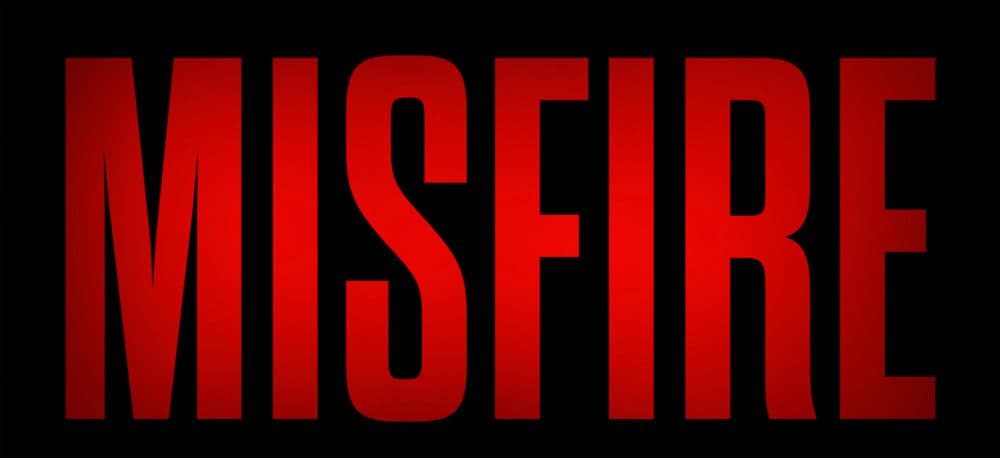Advertisement
Deep dive into the NRA reveals corruption, in-fighting, decline under reign of Wayne Lapierre
Resume
Editor's note: This segment was rebroadcast on June 6, 2022. Find that audio here.
It's a tale of intrigue, corruption and backstabbing. Of lavish meals and private jets. It includes hubris, incompetence and even Russian spies. But it's not a new John Grisham novel. It's NPR investigative reporter Tim Mak's new expose of the National Rifle Association, titled "Misfire: Inside the Downfall of the NRA."
The book takes a deep dive into the three-decade-long reign of Wayne Lapierre, who has, through it all, managed to keep his role as the group's leader.
Host Scott Tong discusses the book, some of its findings and how it was reported with Mak.
Book Excerpt: 'Misfire'
By Tim Mak
"Where the f*** is Wayne?"
It's a question that everyone close to Wayne LaPierre has asked from time to time. The answer is usually "I have no idea," followed by another series of profanities. The bookish NRA executive has a habit of disappearing in times of stress. But this question, this Saturday in the late summer of 1998, was different. It was his wedding day, and he was missing at the worst time. Wayne had gotten cold feet.
It was not a problem that could be papered over. Guests had already arrived at the Basilica of Saint Mary in Alexandria, Virginia's Old Town district. With the ceremony delayed, word began to spread throughout the crowd as to the reason why. The priest was prepared to mediate, if only the groom could be found. The bride, Susan, began to cry. The guests, numbering between 100 and 150, casually congregated outside in the warm late-summer air as organ music played over and over.
His closest friends began to fan out to search for him. Wayne had made no secret of his reluctance to get married in the days leading up to the ceremony. He had been married once before and had been separated from his ex-wife for years, but the divorce had been finalized only four months prior to this date.
Wayne's conduct in the time leading up to his wedding with Susan was, to any outside observer, absolutely humiliating. He scurried around, according to a witness, nervously polling anyone he ran into about whether he should go through with it. He asked his staff. He asked a secretary. He asked his friends. To anyone watching, it was clear he was looking for a way out of a wedding that he had felt pressured into by the bride. According to two close friends of Wayne, Susan had sent out the invitations for the wedding without telling him.
When Wayne was finally found on the day of the wedding, he said he didn't want to get married. The best man honored that by placing a single, crisp hundred-dollar bill on the dashboard of his car, a Jeep Wagoneer. With the engine running, Wayne's best man told him they could leave whenever he wanted. The best man later recounted to friends that he offered to drive Wayne away.
But Wayne was ultimately persuaded not to leave by Susan and the priest. Wayne was a remarkably weak-willed man, friends said, and could be counted on to yield to any demand if it was issued strenuously and loudly enough. This in itself might not have been so consequential if he hadn't risen to head what would become a $400-million-a-year firearm advocacy organization.
The guests began to stream back into the church. But it is impossible to hide the disappearance of a groom. Wayne's reluctance had delayed the wedding for close to an hour, and the reputation-conscious Susan would not forget this humiliating blow to her social standing-a concept she valued above all else. Her social standing was largely determined by the people sitting in the pews of that Catholic church. Many of Wayne's invitees were linked to the NRA in some form: Angus McQueen, the gruff head of the NRA's symbiotic advertising and public relations agency, Ackerman McQueen, was there. As was Tony Makris, Wayne's longtime business associate who called him a "brother." Oliver North, the Iran-Contra figure and future NRA president, was present. So were Millie Hallow, Wayne's personal assistant; Woody Phillips, the accused (though never charged) embezzler whom Wayne chose to be the NRA's chief financial officer; and Chuck Cooper, who would be the NRA's outside counsel for decades.
Even though he went through the motions during the ceremony, Wayne's nervousness and anxiety seemed to betray his true feelings. As she said her vows, Susan stared deeply and lovingly at her groom, but Wayne looked like he was about to faint. His eyes darted everywhere but to his bride: the audience, the priest, the ceiling, the floor. For the guests who looked on, it was extremely uncomfortable to witness, and not the kind of wedding they would forget.
Wayne's wedding is emblematic of his character. By many accounts, he is a man driven by fear and anxiety over all other forces, and his reaction to these emotions is usually to flee and hide. He had told friends that he didn't want to get married, but if this was the case, he nonetheless permitted the ceremony to go forward because he didn't want to cause trouble. Despite being the head of one of the most controversial organizations in America, he is deeply unsettled by personal conflict. This has been his fundamental flaw, and why he has been prey to so many con men over his decades-long tenure at the National Rifle Association. His friends could only look on in horror as those around him manipulated this simple weakness. His best man did not attend the wedding reception that night.
From Misfire: Inside the Downfall of the NRA by Tim Mak with permission from Dutton, an imprint of the Penguin Publishing Group, a division of Penguin Random House, LLC. Copyright © 2021 by Tim Mak.
This segment aired on November 5, 2021.